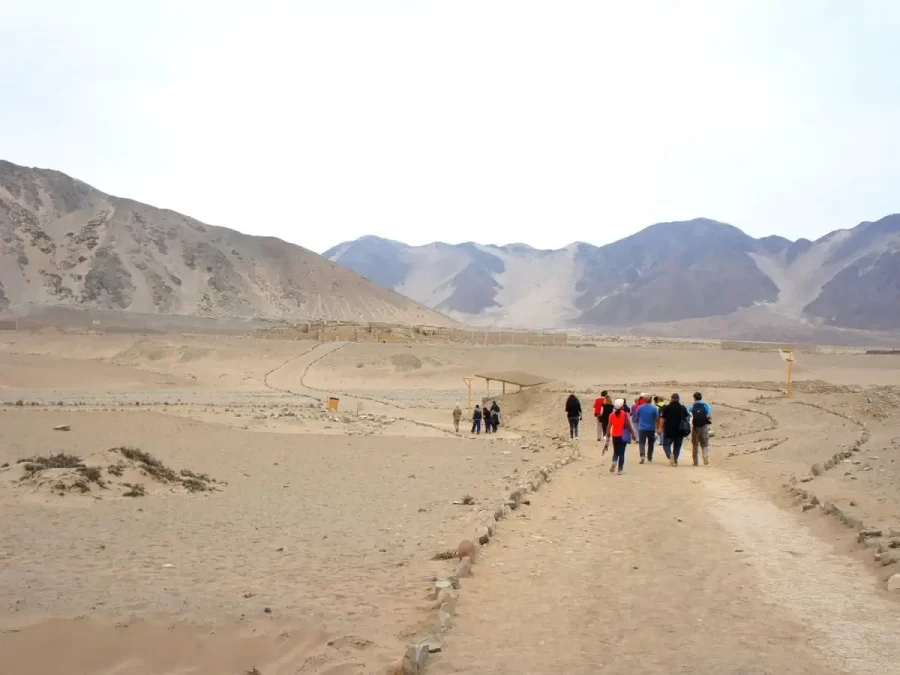We know that in Peru there was the development of great cultures and civilizations such as the Incas; however, long before the Inca Empire there were many other civilizations that brought knowledge and culture to our history. This is how in the beginning of human civilization in America, arises "The Ancient Caral", the first civilization of Peru and America, who had their development 12,000 years ago in the Peruvian coasts.
This first civilization was the beginning of a long cultural and social development, whose vestiges are still alive today.
We invite you to know Caral, the origin. Request the tour with your travel consultant, and take the opportunity to know the historical and cultural side of Lima. Here is some useful information for your visit to the Sacred City of Caral.
Table of Contents
Caral was discovered by Dr. Ruth Shady Solis in 1997, an event that changed the way of perceiving the past because it changed the way in which the historical cultural legacy of Peru and America was perceived.
The ancient civilization of Caral inhabited an area of 66 hectares around the Supe River, it was a peaceful civilization, which lived based on agricultural and fishing activities.
Among the most important contributions left by the Caral we have the domestication and cultivation of products such as cotton, beans, sweet potatoes, pumpkins, chili, squash and others, the same products that are consumed today.
Thanks to the studies carried out in Caral, it is known that this civilization was organized by hierarchies, which were differentiated in the structures of their homes, as well as the utensils they possessed, clothes and ornaments they wore, as well as the treatment they received after death.
Likewise, as for the social organization, this was influenced by the religious thought so the urban organization was always in duality, distributed in 2 groups on both sides of the river, each group was called Saya and was governed by the Icho Huari in one saya, and the Allauca Huari in the other. The Huaris were in charge of directing the Pachacas that were groups of ayllus (families), and they rendered accounts before the Huno, who was the maximum ruler of Caral.
Likewise, a large number of musical instruments were found, such as 32 transverse flutes, 38 bugles, rattles and antaras, showing that music was of great importance not only for daily use, but also in religious ceremonies and rituals.
Many of these flutes made from bird bones, have anthropomorphic and zoomorphic figures carved in relief, among them is the spider monkey, which gives us to understand that the Caral civilization had contact with other civilizations and made the barter, since they also found spondylus from Ecuador, as well as other products from the Amazon and Peruvian Andes.
Regarding the form of government, this was theocratic administrative character, had as an object of worship to fire, so all the ceremonial structures, had elaborate hearths, in which different offerings were made in woven cotton nets, animal remains, bones, plant remains, carved wood, textiles, among others were found.
But undoubtedly the most outstanding knowledge that the Caral possessed was in the way of building their temples, they used the "Shicras", which are basically bags of woven nets, which were filled with small and medium stones, these bags were the base of the walls, due to its shape and design, fulfilled a seismic resistant function, which provided greater stability to the temples.
The pyramidal structures and circular squares also stand out in the Caral architecture.

The city is located in the valley of the Supe River, north of Lima, in the province of Barranca.
From the city of Lima, it is a journey of approximately 4 hours in tourist transport.
Hours of operation are Monday through Sunday from 9 am to 4 pm.
To get to the archaeological complex of Caral there are 2 alternatives, the first is to travel to kilometer 184 of the Panamerican Highway North and take the detour to Amber which is 23 km from Caral, continue the journey until you cross the river, this route takes you directly to Caral, but it is recommended to take this road only from April to November which is the dry season and the river is less loaded.
The second alternative, during the time that the river is more loaded, it is recommended to travel by the same Panamerican Highway North until kilometer 160, until the detour Végueta, which is 24 km from Caral. This route is used from December to March, since the river is more loaded and it is difficult to cross it.
Remember that it is always more advisable to make the tourist tours with authorized and experienced travel agencies, who will provide you with everything you need for your trip, as well as a personalized and permanent assistance.
